Christian Dior, born in Granville, Normandy, revolutionized women's fashion with his groundbreaking designs, particularly the iconic "New Look" unveiled in 1947. This collection redefined femininity by introducing luxurious silhouettes that celebrated the female form, a stark contrast to the austerity experienced during World War II. Dior's work transcended mere clothing creation; he initiated a cultural movement that reinstated Paris as the preeminent fashion capital of the world. His pioneering licensing agreements set the stage for luxury branding, leaving a profound influence on countless designers and fashion trends that followed. With a legacy rich in prestigious awards and significant exhibitions, Dior's impact continues to resonate in contemporary fashion, offering endless avenues to explore regarding his enduring influence and the evolution of his designs.
Early Life and Education
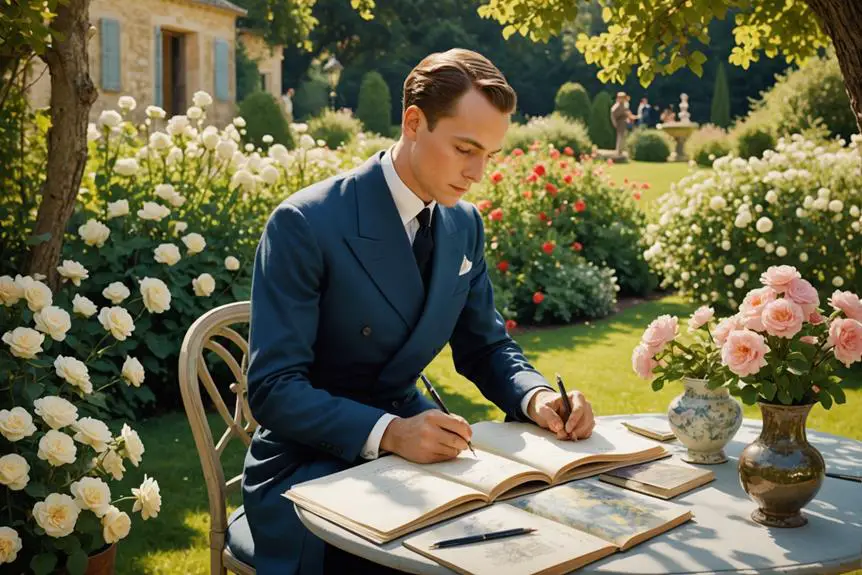
Growing up in a privileged environment in Granville, Normandy, Christian Dior's early life was steeped in affluence, yet it was his emerging passion for fashion that would ultimately define his future. When his family relocated to Paris at the tender age of five, the weight of expectations rested heavily upon him—his parents envisioned a career in diplomacy for their son. However, Dior's true interests lay in a different realm.
As a teenager, he unearthed his love for fashion, selling his sketches on the bustling streets to earn some extra money. This initial venture into design ignited a creative spark within him, showcasing a talent that would soon mesmerize the fashion world. His short-lived tenure managing an art gallery, financially supported by his father, only deepened his appreciation for aesthetics, featuring works by renowned artists like Picasso. Unfortunately, the onset of the Great Depression brought about the closure of the gallery, redirecting him back to his fashion aspirations.
Dior embarked on a formal education in political science at Sciences Po in Paris, a pragmatic choice that did not quench his fervor for fashion illustration. Every facet of his early life, enriched with wealth and opportunities, laid the foundation for the groundbreaking designer he would eventually become.
The Dior Fashion House
The founding of the Dior Fashion House in 1946 marked a pivotal moment in the fashion industry, signaling a vibrant resurgence after the turmoil of World War II. With the financial backing of industrialist Marcel Boussac, Christian Dior launched his debut collection, "Corolle," on February 12, 1947. This collection introduced the revolutionary "New Look," characterized by opulence, hourglass silhouettes, cinched waists, and full skirts, instantly transforming the landscape of haute couture. The impact of Dior's designs can be compared to the evolution seen in other luxury brands, such as Celine, which also underwent significant transformations over the decades, particularly in their branding and identification techniques. Vintage Celine tags provide insight into the rich history of luxury fashion, showcasing how logos and designs reflect their eras.
By 1953, Dior had established itself as a powerhouse, generating annual revenues of approximately $15 million and employing around 1,500 people, which accounted for 55% of Paris couture exports. The brand didn't just stop at fashion; it pioneered licensing agreements in 1949, expanding its reach into accessories, fragrances, and cosmetics. This strategic move solidified Dior's global presence and profitability, ensuring its status in the luxury fashion industry.
Christian Dior's legacy continues to thrive through the House of Dior, which remains a significant influence on design and femininity today. As you explore the world of Dior, you'll discover how this iconic fashion house reshaped not just wardrobes, but also the very essence of women's fashion, leaving an indelible mark on the industry that resonates to this day.
Key Collections and Innovations
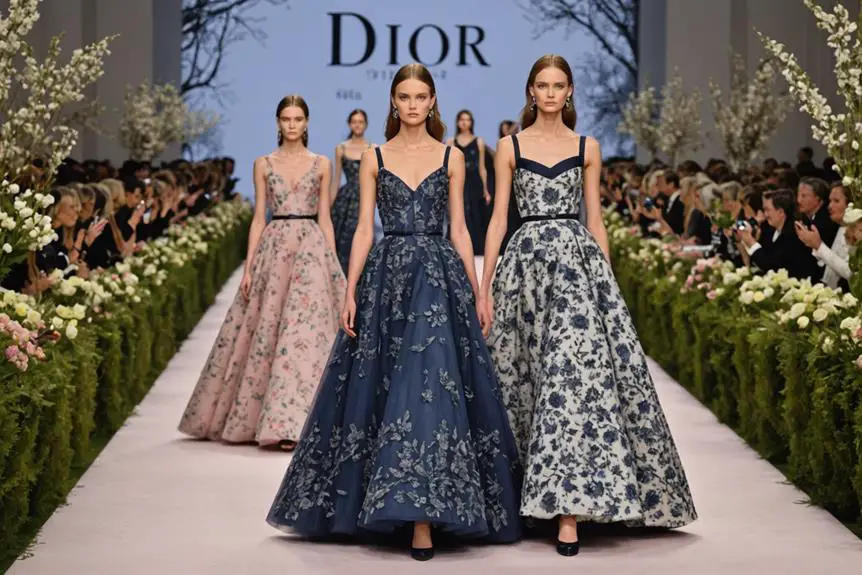
Christian Dior's key collections and innovations not only defined an era but also revolutionized the very concept of women's fashion. His debut collection, Corolle, launched on February 12, 1947, introduced the groundbreaking "New Look," which embraced opulence and femininity through rounded shoulders, cinched waists, and full skirts. This collection reshaped post-war fashion, allowing women to express their elegance and confidence.
Among his most iconic designs, the Bar suit, crafted by Pierre Cardin, epitomized the entire New Look aesthetic. Dior's Autumn Zig Zag collection further showcased his innovative spirit with asymmetrical lines and ample silhouettes, pushing fashion's boundaries.
Dior didn't stop there; his Spring 1955 A-line collection featured undefined waists and smooth silhouettes, diversifying his design philosophy. Each collection set a precedent for future trends, solidifying Paris's status as a fashion capital.
Here are some highlights from Dior's key collections:
- New Look: Revolutionized post-war women's fashion
- Bar Suit: A symbol of elegance and femininity
- Zig Zag Collection: Asymmetrical lines and innovation
- A-Line Collection: Emphasized smooth silhouettes and versatility
Through these creations, Christian Dior Couture left an indelible mark on fashion history.
Awards and Recognition
Dior's impact on fashion is widely celebrated through an array of prestigious awards and exhibitions. The Metropolitan Museum of Art has hosted significant exhibitions that showcase his influential designs, thereby further solidifying his enduring legacy in the fashion industry.
| Award Type | Year |
|---|---|
| Academy Award | 1955 |
| BAFTA Awards | 1967 |
| Césars Awards | 1986 |
These accolades and exhibitions highlight Christian Dior's remarkable contributions to fashion, ensuring that his work continues to receive the recognition it deserves and maintains a lasting influence in the industry.
Legacy and Cultural Impact

Celebrated for his remarkable contributions to fashion, the legacy of Dior extends far beyond his awards and exhibitions. When Christian Dior introduced the "New Look" in 1947, he didn't just create a silhouette; he sparked a revolution that redefined ultra-femininity in the fashion world. This pivotal moment restored Paris as the fashion capital after World War II and continues to resonate today. His innovative designs established a new standard, influencing generations of designers and leading to the creation of vintage tag identification resources.
Dior's influence is evident in multiple aspects of women's fashion:
- The enduring popularity of the hourglass silhouette.
- The pioneering licensing agreements that set a standard for luxury brands.
- The continuous evolution of the House of Dior under various creative directors.
- The global exhibitions celebrating his artistry and cultural impact.
Each creative director has built on Dior's foundation, ensuring his vision of elegance and opulence remains relevant. His designs inspire countless contemporary brands, and exhibitions at prestigious institutions highlight his lasting impact on fashion. Christian Dior's legacy isn't merely about beautiful clothes; it's about the cultural shift he ignited, making him an indelible part of the narrative in women's fashion and luxury.
Frequently Asked Questions
What Is the Profile of Dior?
Dior's profile embodies innovation and luxury, revolutionizing women's fashion with the iconic "New Look." His designs celebrate femininity, utilizing sumptuous fabrics to create an enduring elegance that continues to influence modern style long after his passing.
Who Is the Controversial Designer in Dior?
You might find John Galliano to be the controversial designer associated with Dior. His extravagant designs captivated many, but his anti-Semitic remarks ultimately led to his dismissal, igniting crucial conversations about accountability in the fashion industry.
What Is the Most Famous Design by Christian Dior?
The most famous design by Christian Dior is the Bar suit. It embodies the "New Look," showcasing structured silhouettes with cinched waists, revolutionizing women's fashion and establishing a lasting legacy in haute couture.
Who Is the Woman at the Head of Dior?
You're looking at Maria Grazia Chiuri, the first female creative director of Dior. Since 2016, she has seamlessly blended the brand's rich heritage with contemporary feminist ideals, empowering women through her innovative designs. Her work champions inclusivity and highlights the contributions of female artisans within the fashion industry.
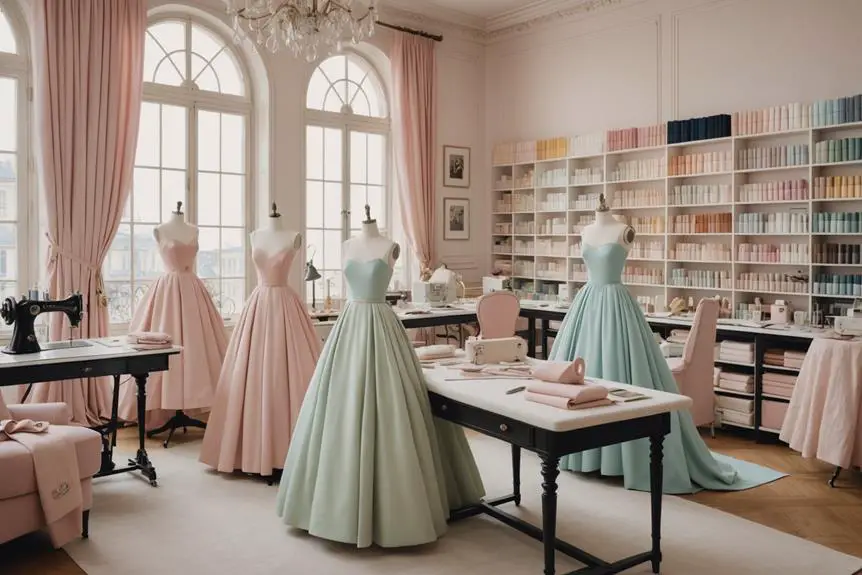

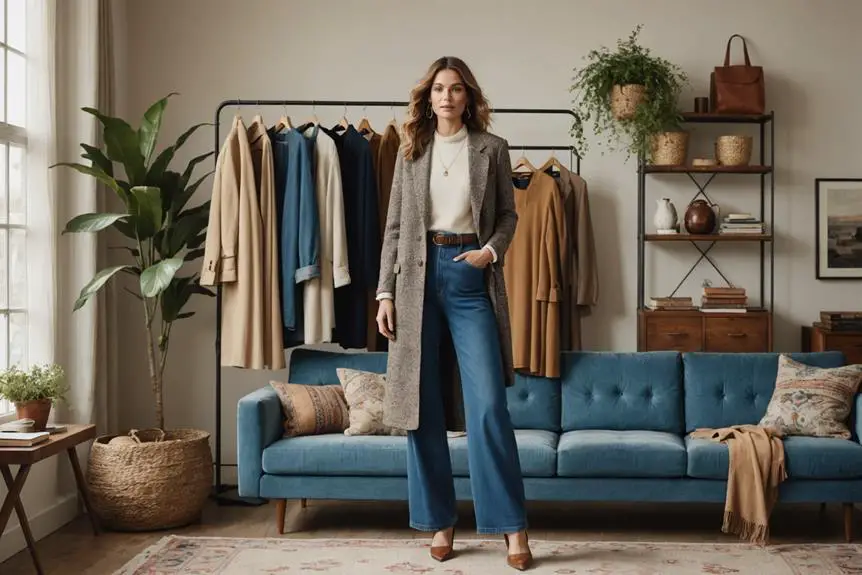
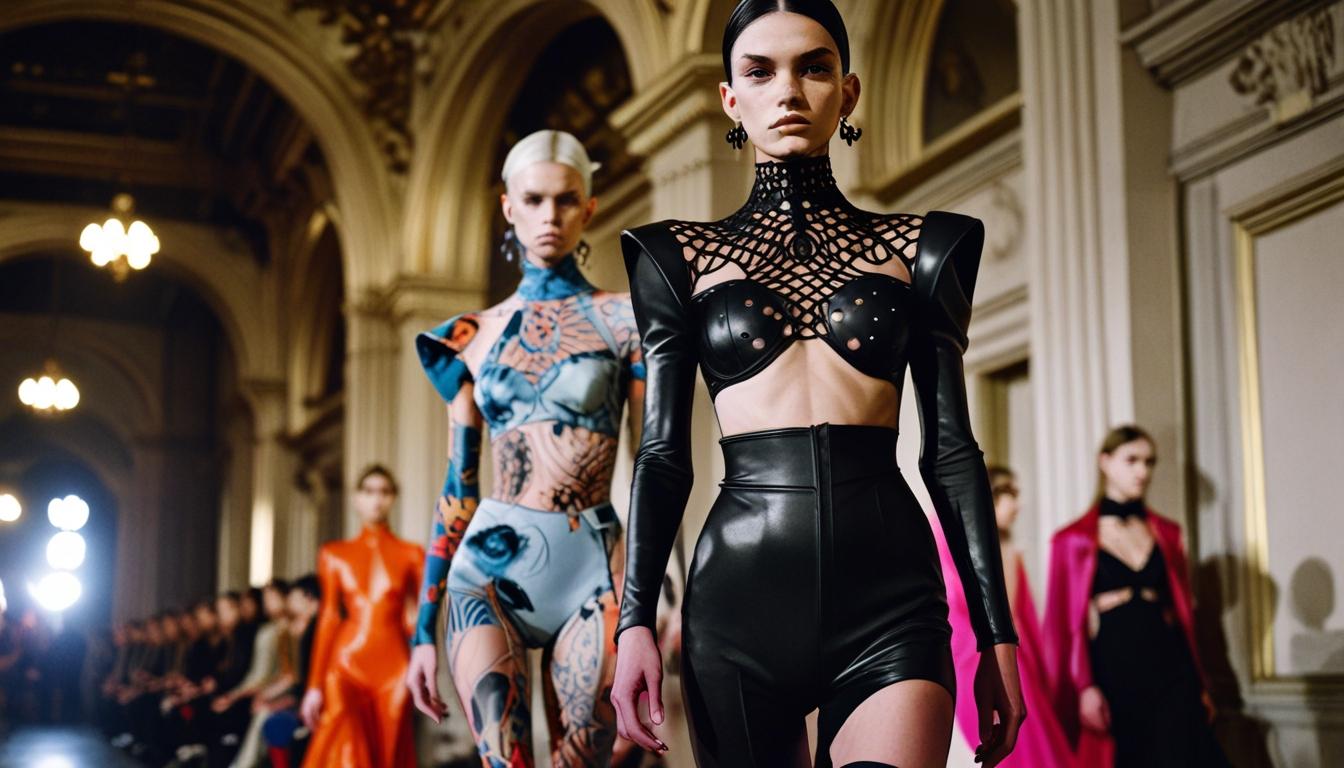
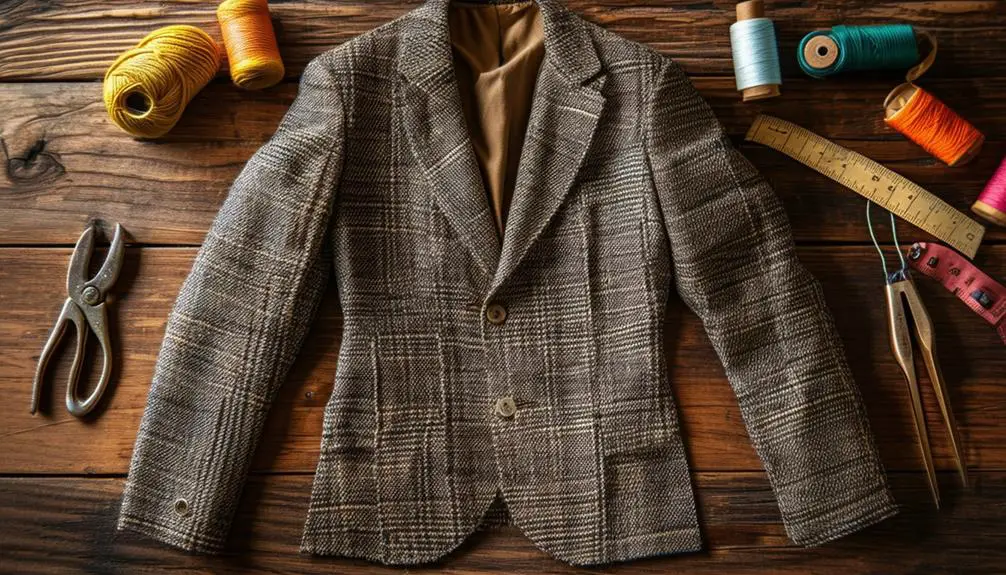
Thank you for your shening. I am worried that I lack creative ideas. It is your enticle that makes me full of hope. Thank you. But, I have a question, can you help me?